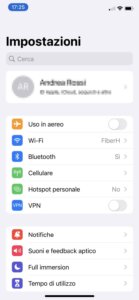We do not always remember previously used login credentials for a particular website or service. When this happens, there are two solutions: carry out the procedure to recover the credentials or search for them in a document or application in the hope of having saved them as a precaution.
However, there is another equally effective solution: recover forgotten username and password through phone settings. All next-generation devices now ask users if they want to store their credentials in a safe keychain: Answering yes not only ensures easier and faster access (since from the next time you will no longer need to type the username or password), but also the possibility of viewing them whenever you want.
In this article we explain how to view saved passwords on iPhone, so you can recover them in a few seconds without having to change them every time using the classic recovery procedure.
index- How to view saved passwords on iPhone in Settings
- How to view saved passwords on iPhone with Siri
- How to enable automatic password entry on iPhone
- How to activate iCloud Keychain on iPhone
- Conclusions
How to view saved passwords on iPhone in Settings
To view passwords saved on your iPhone, you can use the "Passwords" tab in the phone's Settings app. The only requirement is biometric recognition using Face ID or fingerprint. If facial or fingerprint recognition fails, you will need to enter the unlock code.
Here's how to proceed:
- Shelter adjustments and select the "Password" item.
- Complete the biometric recognition to access the "Password" section (alternatively you can use the unlock code).
- Select the site whose credentials you forgot.
- Tap the "Password" item to view your password.
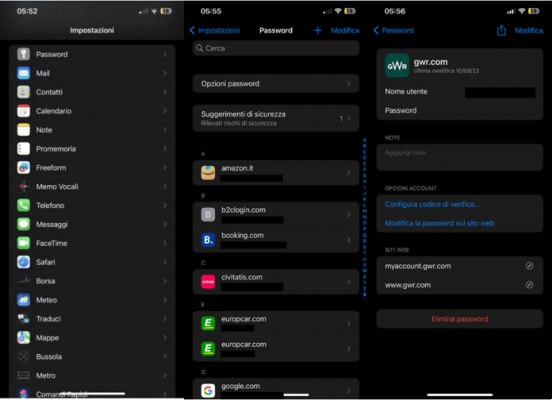
Once you have touched the "Password" field, the system will automatically display the "Copy Password" prompt: this way you can return to the website for which you did not remember the login credentials and easily paste the password using the classic copy and pasting operation.
You can also change the password through the "Edit" option located at the top right: once you press "Edit", the password is displayed in clear text and you can change it to your liking. If you wish, you can also decide to remove it with a simple tap on "Delete Password" at the bottom.
When opting for a change, it is important that the new password be more difficult than the previous one, so that the website in question is more secure. In this sense, our study on how to create a strong password can help you.
Note- The "Websites" section lists sites that require you to enter the same credentials.
How to view saved passwords on iPhone with Siri
Another way to see saved passwords on iPhone is to ask directlySiri voice assistant to display the login credentials for a particular website. For example, you can use the voice command "Hey Siri, show my passwords": after a few moments the assistant will open the "Passwords" section of the Settings app.
Another voice command you can use is the following: "Hey Siri, show me your Facebook password", to show the password saved by Siri for the well-known social network.
If the "Hey Siri" command doesn't work, make sure you have the feature enabled: open the Settings app, tap the "Siri & Search" item, then move the switch from left to right next to the "Turn on Hey Siri" option. Also make sure that the "Press the side button for Siri" and "Use Siri when locked" functions are active, to summon the voice assistant quickly and easily.
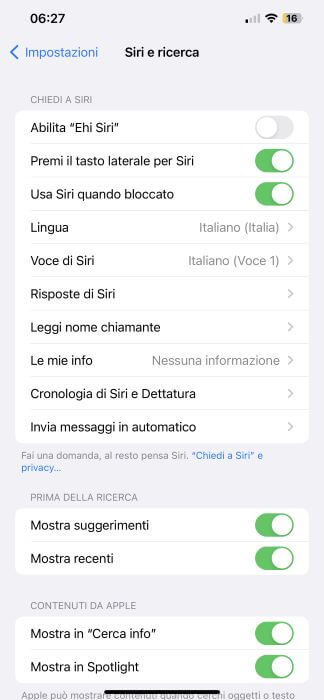
How to enable automatic password entry on iPhone
To make it easier to memorize your login credentials on iPhone, we suggest you enable automatic credential entry through the "Password" section in Settings (if you haven't already).
This is the procedure to follow:
- Open the application adjustments.
- Select the "Password" item.
- Perform biometric recognition or enter the unlock code.
- Tap "Password Options."
- Move the toggle next to “Automatic Password Entry” from left to right to activate the feature.
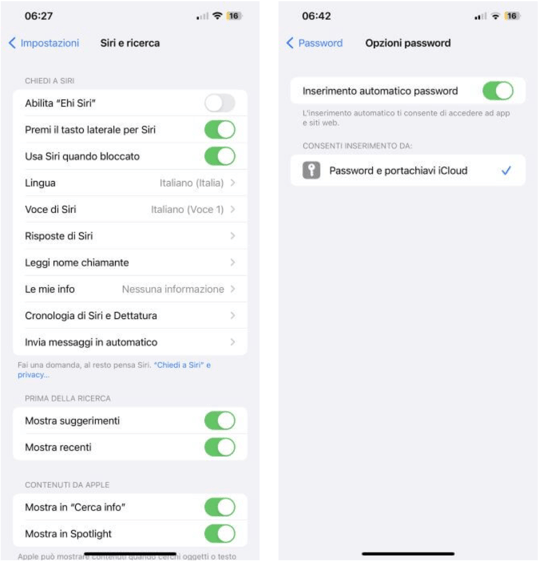
Note- Also make sure that a blue confirmation check appears next to the "iCloud Password and Keychain" item. In this sense, iCloud Keychain plays a fundamental role, since it keeps passwords, access keys and other important information updated on all Apple devices.
Still regarding the security of your iPhone, we also suggest that you enable two-factor authentication.
How to activate iCloud Keychain on iPhone
In this sense, let us briefly recall how to activate iCloud keychain on iPhone:
- Open the application adjustments.
- Tap your name above "Apple ID, iCloud, purchases, and more."
- Select "iCloud."
- Tap the "Password and keychain" item.
- Toggle the switch from left to right next to the "Sync this iPhone" option to activate iCloud Keychain.
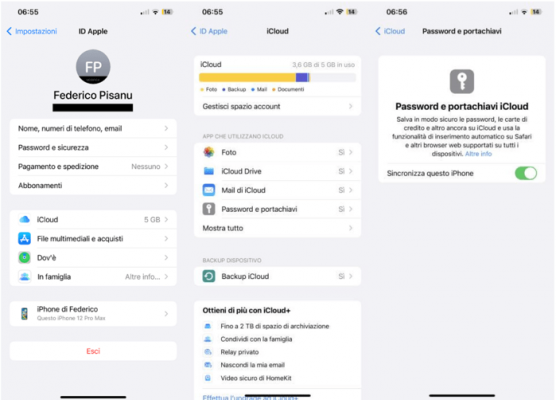
Note- The functions performed by iCloud Keychain are summarized in the “Passwords and Keychain” screen. Here's why it's so important: "Securely store passwords, credit cards, and more in iCloud, and use the auto sign-in feature in Safari and other supported web browsers on all devices."
Conclusions
Our guide on how view saved passwords on iPhone ends here. The procedure is very simple, you simply have to enter the “Password” section of the phone and perform facial or fingerprint recognition. Alternatively, you can also use the Siri voice assistant. However, what's really important is to have iCloud Keychain active so you can store passwords securely and take advantage of the auto-entry functionality in the default Safari browser and other supported browsers.
Speaking of safe places to store your login credentials, we invite you to take a look at the best password managers available on the market today.
We also suggest you delve deeper into the topic master key, a new form of authentication designed to replace the use of passwords as we have always known them. We talk about this at length in our guide on how passwords work.
How to view passwords saved on iPhone




